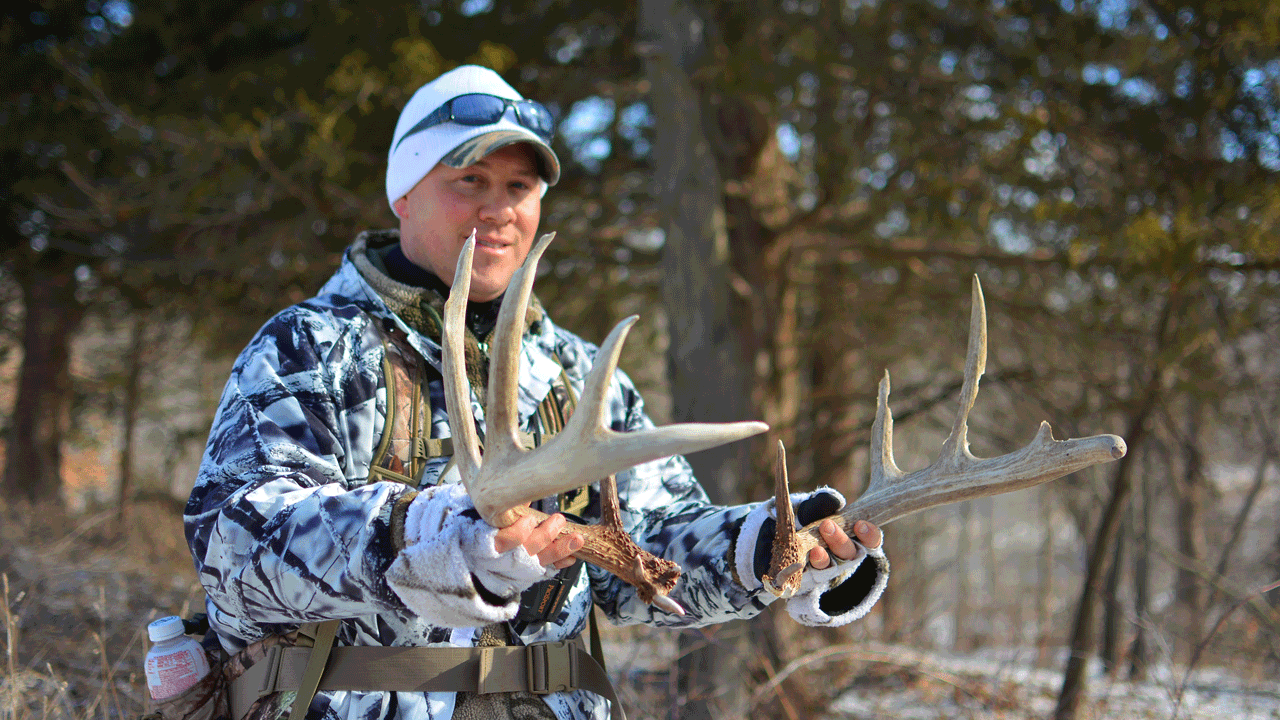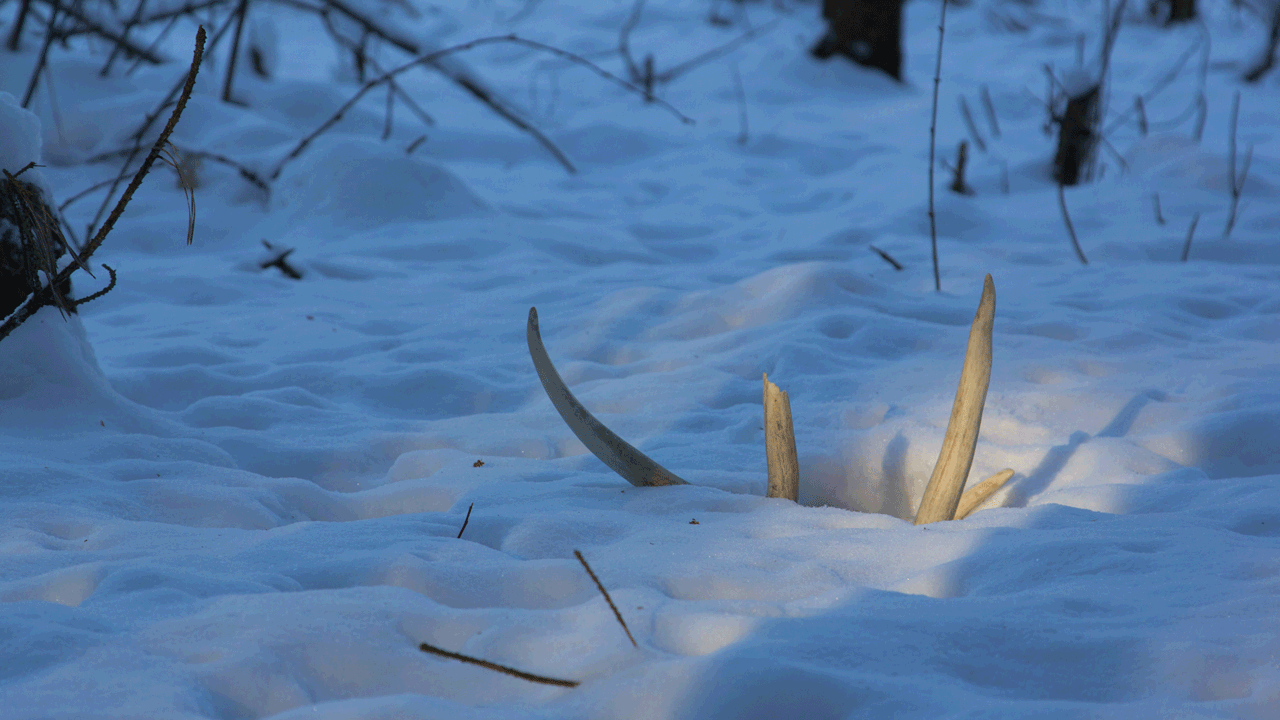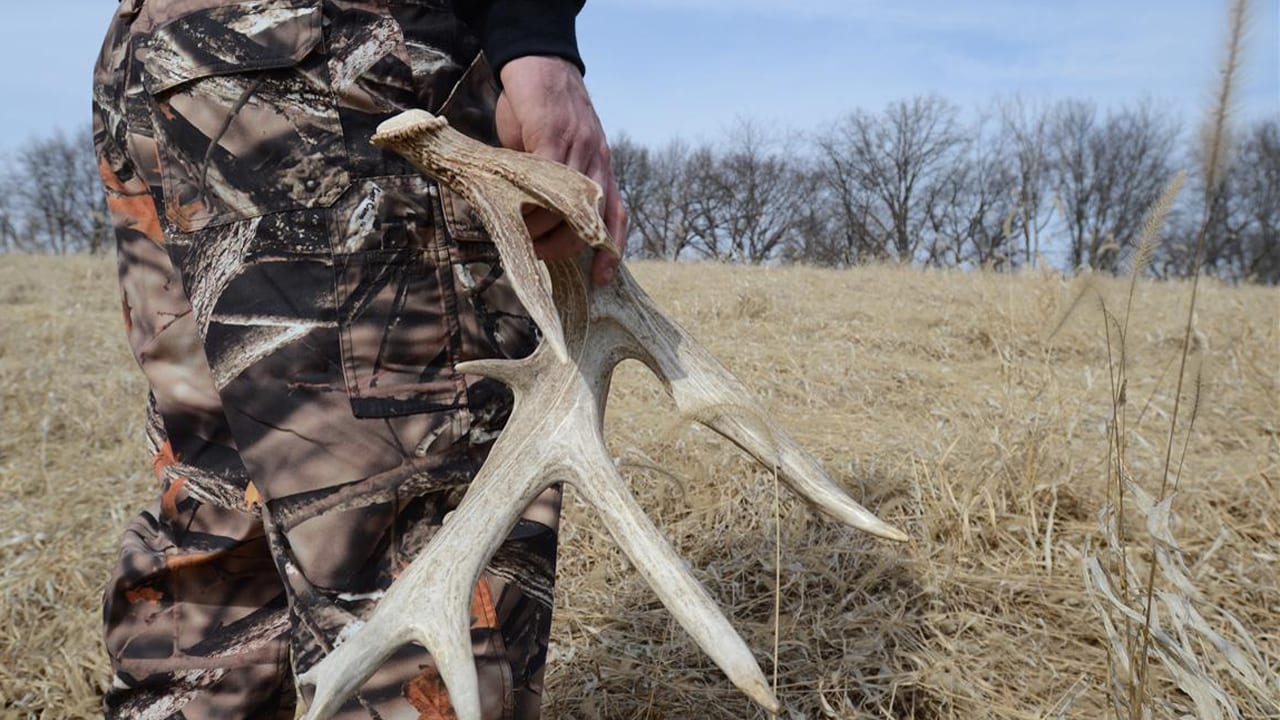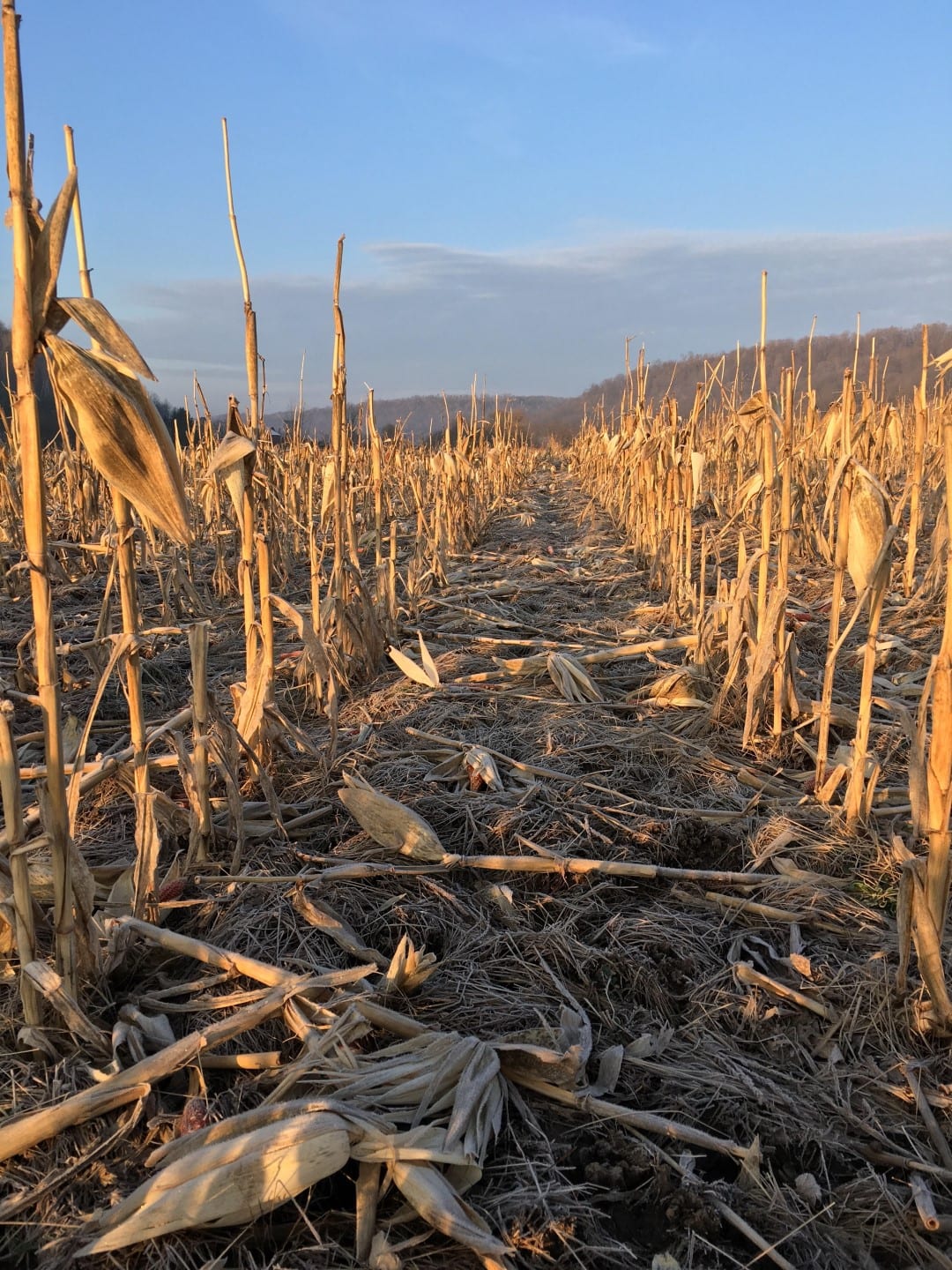Paul Annear
Finding quantities of sheds is all about timing and knowing the habitat and deer on your land. Shed hunting during optimal weather conditions is also key to success
Each year I set out to find shed antlers and with every passing shed season my excitement for sheds almost equals that of deer hunting. Shed hunting is not only an excellent activity to shake out the winter blues; it can also be valuable to planning next year’s hunts. The most valuable pre-season scouting I do occurs six months before the season during shed hunting. Not during summer months. I place more value on the leftover sign I find while shed hunting than I do summer trail camera pictures five months later. Finding shed antlers is predicated on timing and strategies.

Is timing really that important when it comes to finding shed antlers?
When?
Timing can be critical to finding quantities of sheds. Scouring a property too soon can result in bumping deer off your property and spending time, and possibly dropping antlers, elsewhere. Whitetails endure enough pressure during the hunting seasons and the last thing you want to do is run around your property while they are on “R&R” time. During extremely cold or snowy winters, or a drought prior to the season, deer can shed earlier but typically they will drop their antlers around the same time each year.
Using trail cameras from January through March can be very helpful. Once you begin spotting bucks carrying one side, you are best to give it a few days and then begin your first shed walk of the year. I rarely begin shed hunting before late February on my property in southwestern Wisconsin. Historically, I find the most number of sheds between late February into early April. Finding patterns of when deer shed in your area is key to coming home with a pack full of sheds. This is especially true on public land where you are competing against other shed hunters. Weather cooperating, it is hard to beat the last weekend in March for prime shed hunting.

Do you know when and where to look for sheds?
Why?
The first days following complete snowmelt (typically late March in Wisconsin) are the best days to observe trails, rubs and scrapes from the previous years rut. The woods appear just as they did on those crisp November tree-stand sits. During shed hunting, scour your entire property for missed or ignored areas such as bedding and travel corridors. Use this information to confirm your hunting strategies and also use it to employ necessary changes to increase deer hunting success.
Searching for prized sheds is an excellent way to beat cabin fever and engage the entire family in an outdoor activity. If you are introducing children to the outdoors, shed hunting is fun way to get them moving and excited about deer; rather than telling them to sit quiet in a deer blind.

Don’t miss out on gathering scouting info while shed hunting in later winter. You can learn a lot at this time of year.
How?
Shed hunting during cloudy, overcast conditions provides me with the best chance to spot a shed lying in grass or the forest floor on a bed of leaves. Couple cloudy conditions with a little rain and sheds “pop” out and are very visible. The rain produces a sheen look to the antler and darkens leaves on which they lay.

Looking for shed antlers in the midst of a corn stubble field can be tough on the eyes.
If you can only set aside one weekend to shed hunt, you’ll obviously want to try and plan your walks during optimal shed hunting conditions. Shed hunting a picked cornfield during a bright sunny day is hard on the eyes, and after a short time, every cornstalk appears to be a Boone and Crockett shed.
In hill country, there is no better location to find sheds than south-facing bedding areas. The wintertime sun does not reach high in the sky; this limits the majority of sunshine to East and South hillsides. I have found so much success on south facing hillsides that I seldom walk North-facing slopes. North facing hills receive little sunshine, if any, and stay noticeably colder all winter long. On flat terrain, finding thick bedding areas or cedar packed sections of timber block wind and are potential hotspots for finding shed antlers. If you are searching for sheds by yourself, be sure you have a plan for covering the property you are walking. Aimlessly searching with your head down is a good way to accidentally search the same area twice. Weaving back and forth in an organized fashion ensures you cover new ground with each step. If you are walking with others, spread out about 20 yards and walk parallel with one another.
Conclusion
Much like deer hunting, shed hunting is exciting and challenging. It requires habitat knowledge, timing and strategy. Finding sheds will invariably increase your knowledge of deer behavior patterns and keep you on the hunt, even in the off-season.





